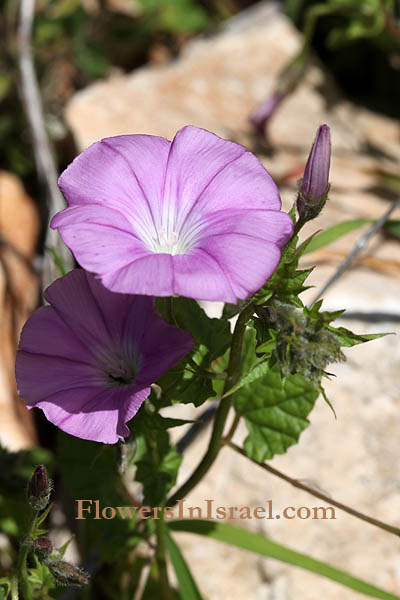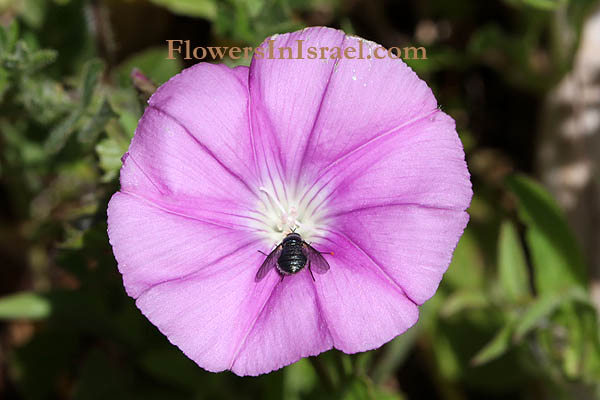Hebrew: חבלבל סורי
| Scientific name: | Convolvulus coelesyriacus Boiss. | |
| Common name: | Syrian Bindweed | |
| Hebrew name: | חבלבל סורי | |
| Plant Family: | Convolvulaceae, חבלבליים |

Location: Carmel, Hurshat Ha'arbaim |
| Life form: | Therophyte, annual | |
| Stems: | 15-40 cm, glabrescent or adpressed-puberulent; stems decumbent or ascending | |
| Leaves: | Alternate, entire, dissected, dentate or serrate | |
| Flowers: | Pink, violet | |
| Fruits / pods: | Capsule | |
| Flowering Period: | March, April, May | |
| Habitat: | Mediterranean maquis and forest | |
| Distribution: | Mediterranean Woodlands and Shrublands | |
| Chorotype: | Mediterranean | |
| Summer shedding: | Ephemeral |

Location: Carmel, Hurshat Ha'arbaim Derivation of the botanical name: Convolvulus, Latin, convolvere, "to twine around"; "a bindweed" (Plinius), from convolvo, volvi, volutum, ere "to droll together, roll up, intertwine." coelesyriacus, coelum, coel, "heaven", syriacus, "from Syria"; heaven from Syria. The Hebrew word chavalval, חבלבול. Shaul Tchernichovsky (1875 – 1943), poem: "You Are So Fragrant" (19.7.1929):... ניחוחם של חבלבלים, nichucham shel chavalvalim, fragrance of Convolvulus (Tchernichovsky's Note: chavalval, חבלבול, Convolvulus L. Winde, Bindweed, Вьюнок).
|